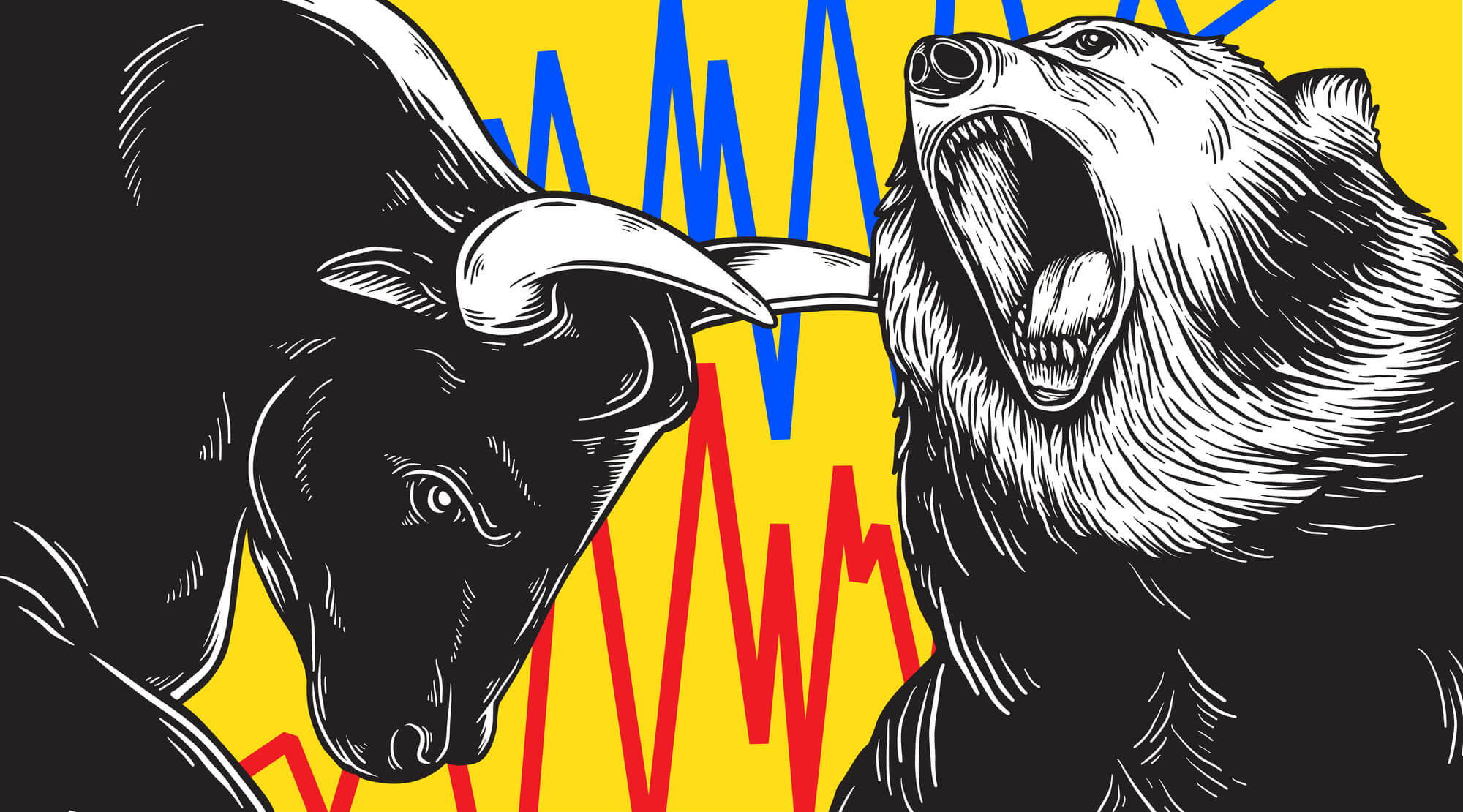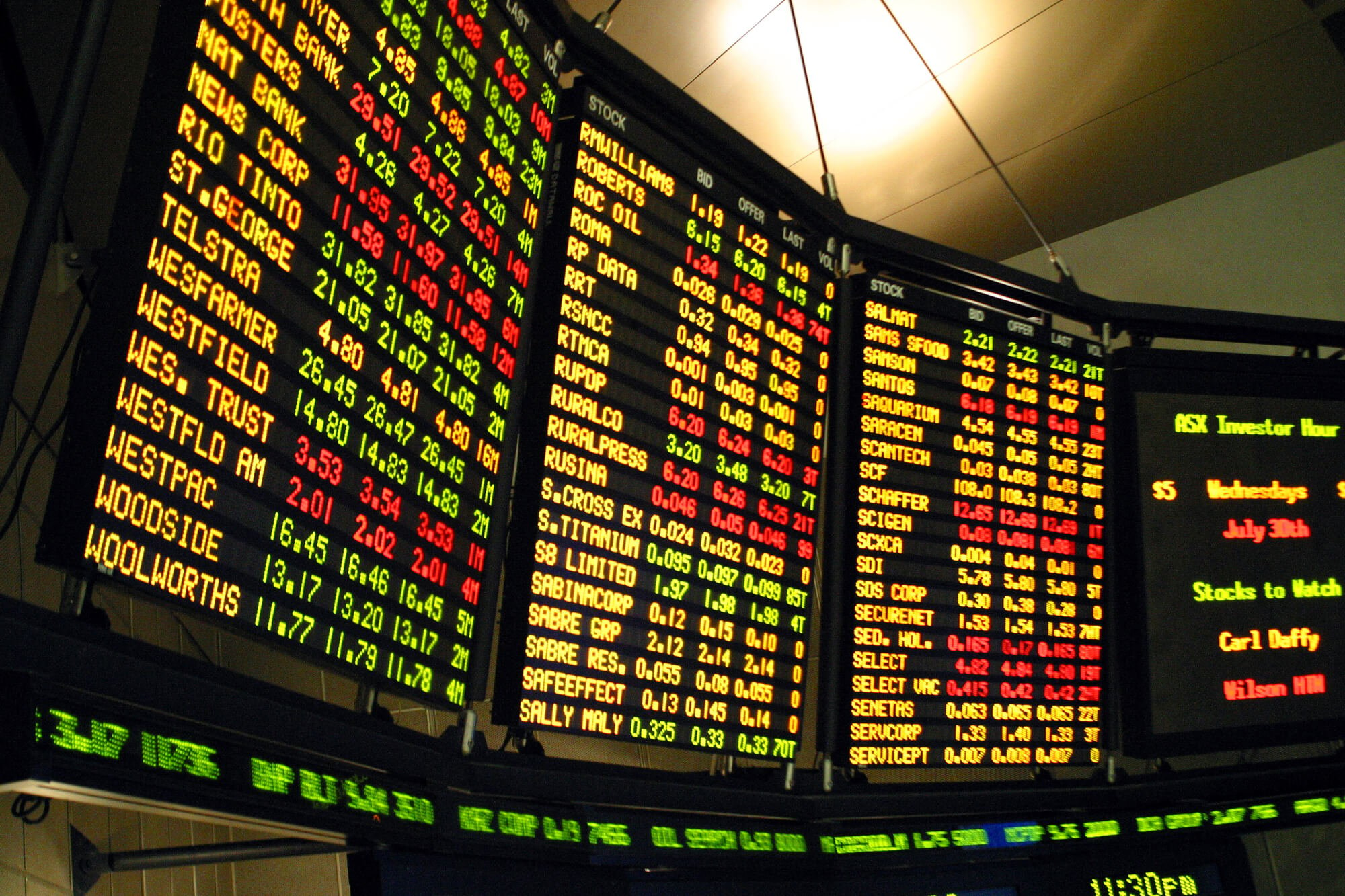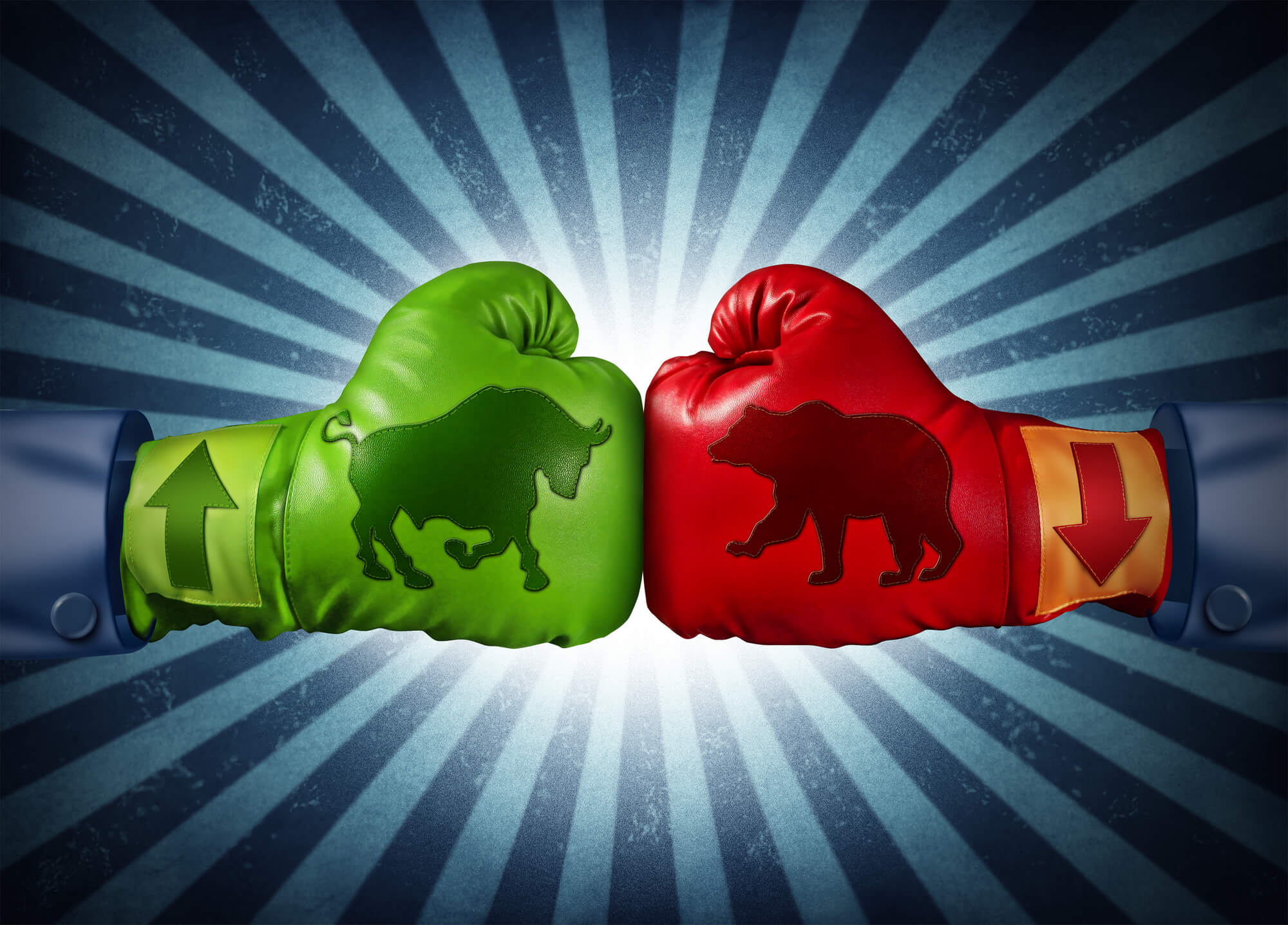While investors commonly evaluate the performance of individual stocks, there’s also value in tracking the performance of the market as a whole. But if you’re new to the world of investing, terms like “bull” and “bear” markets can sound like something out of a children’s book.
Here’s the difference between bull and bear markets and what that means for investors.

What Is Bull and Bear Market?
The terms “bull” and “bear” market refer to the overall direction that the market takes. Each term describes the relative amount of risk and reward posed by the market for a given time period. Note that while individual stocks are tracked on a daily basis, the market itself receives these labels over the course of time.
What Is a Bull Market?
Visit Wall Street in New York and you’ll be confronted by a large, bronze sculpture of a charging bull. The term “bull market” conveys a sense of strength and power. It is applied when stocks rise across multiple industries and sectors.
According to the United States Securities and Exchange Commission, a bull market occurs “when there is a rise of 20% or more in a broad market index over at least a two-month period.”
It’s also common to speak of markets as being “bullish,” which means that the trend is generally going up.
What Is a Bear Market?
A “bear market” is the opposite of a bull market. The SEC defines a bear market as one where “a broad market index falls by 20% or more over at least a two-month period.” A bear market occurs when stock prices decline across multiple sectors and market sentiment is pessimistic.
The Difference Between Bull and Bear Markets
The main difference between a bull market vs. bear market lies in the direction the market is heading. But there are other key differences as well.
Stock Market Prices
The main difference in a bull vs. bear market lies in the price of stocks. Stock prices will be elevated during a bull market and will fall into decline during a bear market.
National Economy
A bear market can often be a symptom of deeper ills. A bear market may signal such things as:
- A decline in manufacturing
- Low (or negative) GDP growth
- Higher rates of unemployment
- Low wages
Conversely, a bull market can indicate — and, in fact, be caused by — improvements in all of these same areas. The stock market has always served as a microcosm of the American economy, and bull and bear markets reveal how well the nation performs.
Duration
The average bull market lasts 991 days, or 2.7 years. Conversely, the average bear market lasts just 289 days or around 10 months. That’s good news because it keeps the economy moving forward and keeps investor confidence high.
Investor Sentiment
A bear market can cause investors to act with fear regarding their financial future. They may jettison their stocks and invest in other assets, such as precious metals or real estate, rather than face the risk of an unstable market.
During a bull market, investors may be more likely to purchase stocks and hold onto their investments.

Investing in a Bull Market vs. Bear Market
What kind of strategy should you employ when Investing in a bull vs. bear market? Here are some general tips to help you take advantage of a thriving market.
1. Stay Focused on Your Long-Term Goals
There’s never a bad time to think through your financial goals. For many investors, long-term gains are still more important than the promise of short-term rewards. Don’t get swept away by rumors of the latest startup. Instead, stay focused on your larger goals and only integrate riskier investments in a diversified portfolio.
2. Don’t Be Afraid of Risk
While you shouldn’t leap at every opportunity that comes your way, now’s the ideal time to sink some cash into that new startup or IPO. For one thing, the bull market will help you absorb this risk, and you’ll be better equipped to add these small-cap stocks to a well-balanced portfolio.
3. Set Your Sights on Cyclical Stocks
Cyclical stocks represent industries that see dramatic success in short periods. This is true for the travel, tech, and real estate industries. A bull market is a great time to invest in these cyclical stocks since you’ll only maximize the rewards when the economy is booming.
4. Use Funds to Secure Greater Diversity
A “fund,” such as an index fund, mutual fund, or exchange-traded fund, is a bundle of stocks you buy all at once. While some funds can be organized around a particular industry, you can generally expect a diverse range of companies in each fund. This is a great way to achieve diversity in your portfolio.
5. Make Trades with Dollar-Cost Averaging
Instead of buying shares all at once, purchase a few at a time over the course of days or weeks. This method, known as dollar-cost averaging, ensures that you pay the appropriate price for stock shares and do not overpay due to market volatility.
Investing in a Bear Market vs. Bull Market
How do you invest in a bear market? Even when the market takes a dip, it’s still possible to make reasonable investments and grow your wealth. Here’s how.
1. Don’t Panic
During an economic decline, it’s tempting to want to cut your losses and jettison your underperforming stocks. But take the long view. Do your research and hang onto the stocks that had a strong history prior to the economic downturn. You may discover that they pay off once the market stabilizes.
2. Look for Bargains
If there’s a positive side to a bear market, it’s that large-cap stocks may be heavily discounted. Now could be your chance to snatch some shares of a larger corporation and reap the rewards once the market rebounds.
3. Focus on Buy-and-Hold Stocks
A bear market is no time to invest in that risky startup. Instead, focus on large-cap stocks from established, stable companies. These buy-and-hold stocks can provide long-term gains and add some stability to your portfolio during a volatile market.
4. Stay the Course with an Index Fund
By definition, an index fund simply tries to track a common market index, such as the S&P 500. This can be a better approach than trying to actually beat the market and can help you stay the course until the market rebounds.
What Is Bull and Bear Market Performance Going to Do to My Portfolio?
What about the stocks that are already in your portfolio? It’s true that a bear market can cause the value of your portfolio to decline. But that’s why it’s crucial not to slip into “panic mode.” The easiest way to lose money on your portfolio is to start jettisoning stocks simply because they’re not performing as they once were.
Likewise, a bull market isn’t necessarily the season to start adding a lot of risky startups. While a bull market offers you a chance to take on more risk, you’ll still need to balance this risk with your other investments.
Instead, stay the course. Focus on your long-term investments and seek to grow your investments over time. Indrani De, FTSE Russell’s head of global investment research, says that “in periods of high economic uncertainty… markets will remain in a high volatility regime.” The trick is to look past the bumps.

Keep Track of Your Investments
Bull and bear markets are not unusual. Navigating each requires the right tools. Gorilla Trades members get access to educational content, research resources, and more. Sign up today and receive 30 days of stock picks absolutely free.




